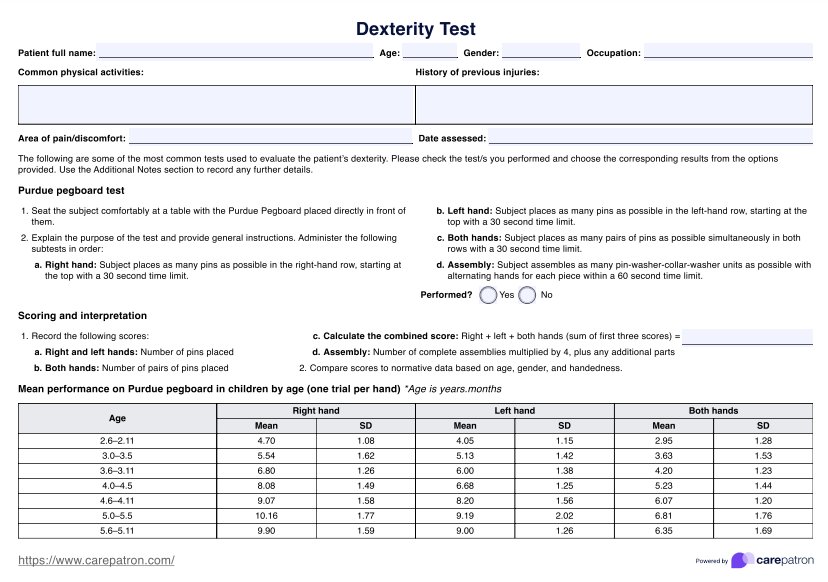While Dexterity Tests can indicate problems with hand and finger function, they are not diagnostic tools. They can, however, provide valuable information that contributes to a broader diagnostic process.

Dexterity Test
Perform a hand function assessment with our comprehensive guide on Dexterity Tests. Free PDF template included. Elevate your patient care today.
Use Template
Dexterity Test Template
Commonly asked questions
The testing frequency largely depends on the patient's condition and the test's purpose. For example, testing might occur more frequently in rehabilitation to track progress.
While some components of Dexterity Tests can be practiced at home, it's important to remember that a healthcare professional should administer them to ensure accuracy and safety.
EHR and practice management software
Get started for free
*No credit card required
Free
$0/usd
Unlimited clients
Telehealth
1GB of storage
Client portal text
Automated billing and online payments











